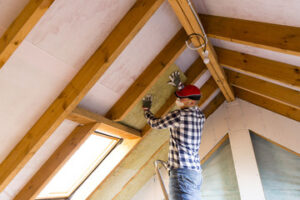Grand Piano Moving Charleston is a difficult and dangerous job. It’s usually best to hire professional piano movers. They’re insured against damage and have the equipment to make it safer and easier.

Before the move, it’s important to plan the route. That means measuring every doorway, staircase and hallway that the piano will go through.
Pianos have a lot of delicate components that need to be protected and secured during the moving process. This includes the keys, pedals, and soundboard. Even the smallest bump can knock out the key mechanisms and damage the internal parts of the instrument. This is why it’s important to hire experienced professional piano movers for the job. It’s worth the extra cost to avoid costly repairs or replacements down the road.
The size of your piano and type (upright or grand) will play a major role in determining the overall moving costs. For example, a grand piano is much larger than an upright, and it requires a lot more labor to maneuver. In addition, a grand piano needs to be disassembled and reassembled, which adds to the overall expense of the move.
Choosing the right day and time for your piano move can also impact the total moving costs. For example, local moves tend to be less expensive than long-distance moves, as they require fewer resources. Additionally, accessibility challenges at both the current and new locations can significantly increase moving costs. This could include navigating narrow hallways, staircases, and tight doorways.
It’s best to move a piano during dry weather, as rain or snow can cause significant damage to the instrument. Likewise, fluctuations in humidity during transport can affect the piano’s tuning and cause its wooden components to expand or shrink. Professional movers use tools like climate-controlled trucks and breathable covers to minimize these risks.
When you’re deciding on a date and time for your move, make sure to give yourself plenty of time. Not only will this help ensure that your piano is ready for the big day, but it will also allow you to plan and coordinate the move with other household members. For instance, you may want to focus on getting bigger furniture items moved before your piano arrives so that you can create a clear path for the instrument.
If you live in a city with challenging terrain, it’s a good idea to hire specialized NYC movers for the job. Tight spaces, stairs, and other obstacles can be difficult to navigate with a grand piano, so hiring a team of experts will help you avoid costly repairs or replacements down the road.
Preparing for the Move
A grand piano holds a special place in many people’s hearts. These instruments have been providing joy to musicians and music lovers for generations, and are a major investment in any home. The size and weight of a grand piano make it a difficult, time-consuming task to move, and it requires the help of a strong team to ensure the instrument’s safety and security. When you hire a professional piano moving company, they’ll bring the proper equipment to protect both your furniture and the grand piano itself. Professional piano movers use heavy-duty moving dollies and straps to lift and support the piano during transit, as well as protective blankets to prevent scratches on wood surfaces.
To avoid back injuries, it’s best to have a team of at least three or four movers when lifting and moving a grand piano. Using a team to move a piano also reduces the risk of faulty technique and improper weight distribution, which can cause serious injuries. Assign a team leader, spotters, and lifters to communicate clearly and coordinate throughout the move. It’s important to maintain a straight posture when lifting, and never twist while holding the piano.
Before the move, it’s a good idea to measure doors and hallways to ensure the grand piano will fit through them with room to spare. You may also want to consider removing the legs and pedal lyre on the grand piano before the move, to make it smaller and easier to maneuver.
During the move, it’s crucial to keep the piano in sight at all times and to take frequent breaks. This helps to minimize the risk of injury and to keep the piano from becoming too fatigued to manage. In addition, if you encounter an unexpected obstacle during the move, be prepared to adapt your strategy on the fly. This could mean taking a different route, removing doors, or temporarily placing the piano down to reassess.
When guiding the piano onto a dolly, one person should position it from the front (lower end), and another should guide it from the rear (upper end). This will help to distribute the weight evenly while protecting the dolly wheels and stairs.
Moving the Piano Up or Down the Stairs
The key to a successful piano move is proper planning and preparation. This includes clearing a clear path to get the piano in and out of the door, removing furniture, moving boxes or other items that could obstruct your way. It’s also important to have a team of strong individuals ready to assist you in the move and to follow specific safety strategies to protect the instrument, the movers and your property.
Before you start lifting, make sure all parts of the piano are secured or disassembled. Lock or secure the lid, and take off the music rack and key cover. You may need to remove the legs or pedal trapwork, too. Save any screws and hardware in a labeled bag.
Once you’re prepared, enlist your team. It’s important to have at least three people to help lift and maneuver a grand or baby grand piano. This helps reduce muscle strain and ensures that the piano doesn’t tip over. Be sure to divide roles and communicate clearly to prevent misunderstandings. For example, designate one person to stand at the back and guide from the front while others lift and support from the sides.
As you begin the move, remember to keep a straight posture and never twist during lifting or carrying. These movements can lead to serious back injuries. Instead, use your leg muscles to support the weight of the piano and avoid lifting with your back. Also, be sure to lift in unison with your team rather than individually. This allows you to better control the weight and reduces the risk of a miscalculation that could cause damage.
On stairs, it’s best to have two people hold the piano securely while you walk up or down them. This will prevent the piano from falling and damaging your floors or walls. If you’re unsure how to safely navigate stairs, ask your professional movers for tips.
Once you’ve finished moving the piano, take a thorough inspection of it to look for any scratches, dents, or other damage. Then, test the keys and pedals to ensure everything works properly.
Taking Care of the Keys
When you are moving a grand piano or any other kind of piano, it is important to take care of the keys. This is because the keys are delicate and are easily damaged during the move. In addition, they can be ruined by changing temperatures and humidity. To avoid this, you should store your piano in an environment with a stable temperature and humidity control unit.
It is best to hire a professional company for piano moving. This will ensure that your piano is transported safely without any damage. In addition, the movers will also have the proper equipment to protect the instrument during the move. They will have piano dollies and piano boards in various sizes to accommodate different kinds of pianos. These tools are specifically designed to prevent the piano from slipping or damaging the interior setup. They will also have a team of trained and experienced movers who will handle the move with care and precision.
Before the move, you should carefully examine the new and old locations. Examine all doors, hallways, staircases and other pathways the piano will have to pass through. You should also measure these paths to ensure that the piano can be navigated through them without any risk of damage. In addition, you should also pay attention to tight turns and narrow spaces.
Once the piano has been moved to its final destination, you should re-attach any necessary components and prepare it for storage. For example, you should lock the keyboard lid to prevent it from opening during the move and cover it with blankets if possible. You should also remove the legs and pedals if you can and wrap them separately for protection.
To protect yourself during the piano move, you should wear heavy-duty clothing and footwear. It is also important to maintain a straight posture while lifting and moving the piano. This will help to prevent back injuries. You should also work in a team of at least three people to ensure that everyone can lift the piano with ease and that there is coordination between members. In addition, clear and concise commands should be used to avoid misunderstandings.

